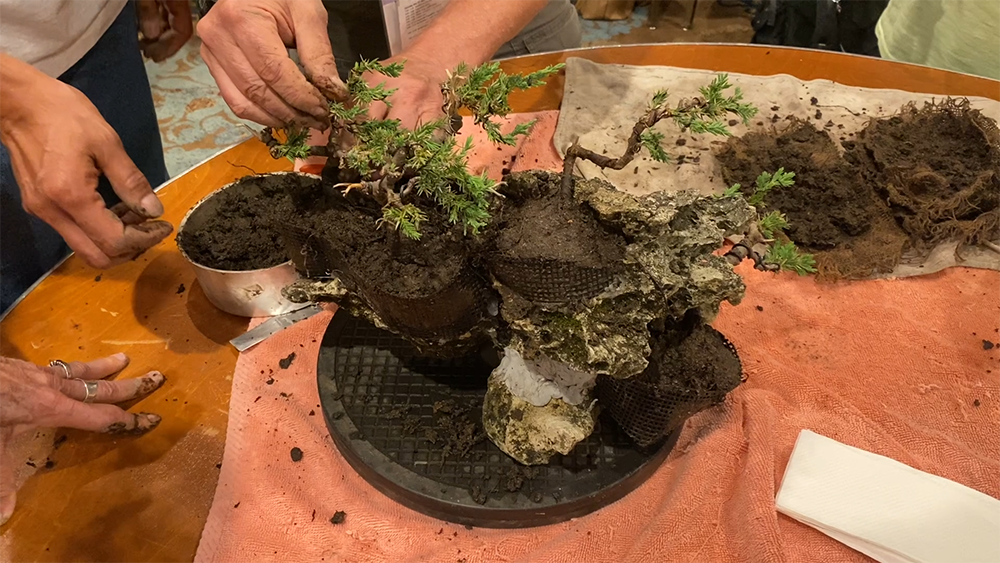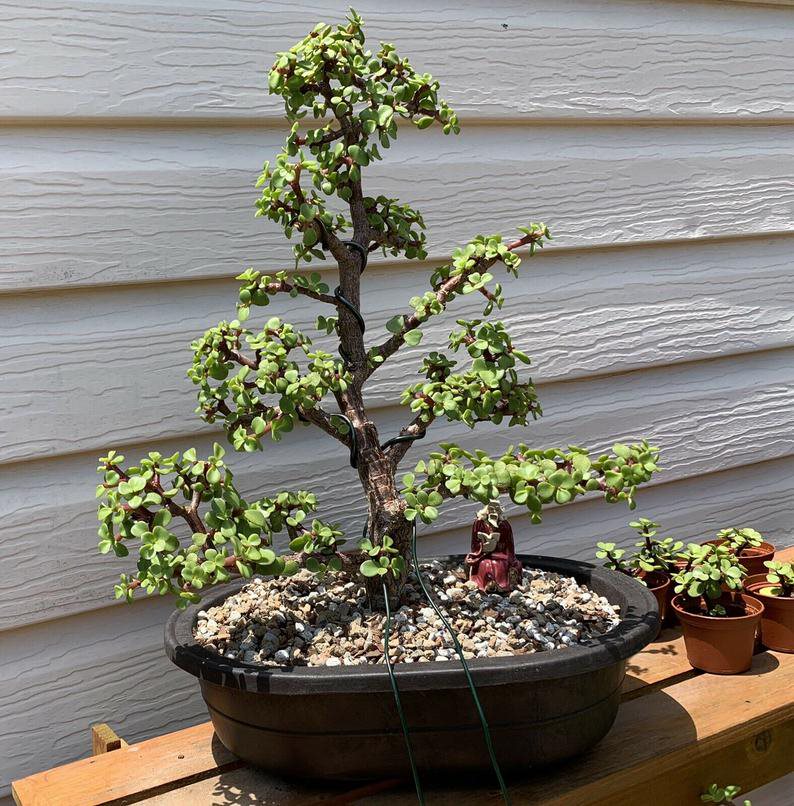28 November, 2022
0 Comments
1 category
By Les Lonsdale
Although the Fall is not as busy for us as is Spring, still there are activities that can keep us busy in our bonsai gardens in preparation for Winter:
- Check wiring – Trees can have a second ‘spurt’ of growth in early Autumn, second only to the growth the experience in Spring. Therefore it is important to keep a watchful eye on any wire that is on your trees. Remove any wires that have become too tight, before they bite into the bark. If the limb is not ready to have the wire removed, then reposition new wire on the same limb. (exception: pines and junipers aged appearance can be enhanced by allowing some wire-bite.)
- Reduce watering – As the days become shorter and the temperatures cool, transpiration slows in the trees and they do not need as much water. Therefore, it is best to monitor your watering schedule, and reduce the amount that they get. The trees should not, however, be allowed to dry out completely.
- Spray for pests/fungus – Though the days are getting cooler, bugs still need to eat. They are also looking for places to lay their eggs for Winter. So, continue to monitor and spray for pests as well as fungus. Apply the proper treatment according to manufacturer’s instructions. (One source suggested to not use Malathion on maples)
- Continue fertilizing – Until trees cease growing (late Sept.- early Oct. {zone 8-9}). Heavy fertilizing through the early Fall strengthens the trees and helps them prepare for Winter and next Springs growth spurt. Use a well balanced organic (preferably) fertilizer.
- No heavy pruning – After September (for Zone 8-9). Heavy pruning would encourage new growth, which is not desired this late in the season, as frost can cause die-back to un-hardened growth.
- Cut back Pine candles – Elongated candles may be cut back now. Candle clusters should be removed except for the smallest 2 candles/branch tip. Pluck out old needles on healthy branchs in order to permit air and light into the branches. This balances energy and may encourage new interior buds to activate next Spring. Get details from pine instruction articles.
- Keep trees in light – As the seasons change, so does the position of the Sun in relation to your trees. You may have to shift trees around so that they get the best amount of Sun. This will help them store energy and food for the Winter.
- Move Tropicals indoors – When the night temperatures drop below 50F, it’s time to begin acclimating your tropical trees to the indoors. However, it is best if you can acclimate them slowly to the drier indoor environment. So, when the days are warm, put them back outside. Take them indoors for increasingly longer segments of time, until it is time to leave them in for the Winter. Spray them with water daily while they are inside and keep them away from drafty places. Reduce water, but do not let them dry out. Air circulation is recommended to reduce chance of fungal infections.
- Clean up – Clean up fallen leaves, weeds, and other debris on benches which make good places for bugs and bug eggs to hide.
- Gather seeds – Now is also a good time to gather mature seeds from surrounding trees, and stratify them over the Winter in the refrigerator for planting next Spring. This is also a good time to collect hard-wood cuttings for planting next Spring. Keep them in a bag of damp sand in the fridge until next April.
- Prepare Winter shelter – It’s not too early to prepare a place to over-Winter your trees, a place out of the wind, but where you can still water them when needed. If you over-Winter in the ground, now is a good time to begin putting them in their Winter beds. Roots of all temperate trees can withstand temps down to at least 25F (according to a horticultural root-kill chart from the University of Oregon – pg. 87 in ‘Bonsai Heresy’ book by Michael Hagedorn). However, strong winter winds can cause die-back on thin branch tips.
- Kodak moments – If you have any deciduous trees that are ‘showing off’, don’t miss your opportunity to take it’s picture for posterity sake. One day (heaven forbid), the tree may go on to ‘meet it’s maker’. But at least you’ll have the happy memories, if you get that snap shot.
Senescence is the process that deciduous trees go through in Autumn that makes their leaves turn different colors and eventually fall off of the tree. It has been found that the Fall colors will usually be better if Autumn nights have been cold earlier in the season, because that will begin the process of senescence sooner. Also, trees that have been defoliated in the Summer, as well as trees that have received lower levels of nitrogen throughout the Summer seem to show off their lovely Fall colors better.
Category: Bonsai Tree Care



